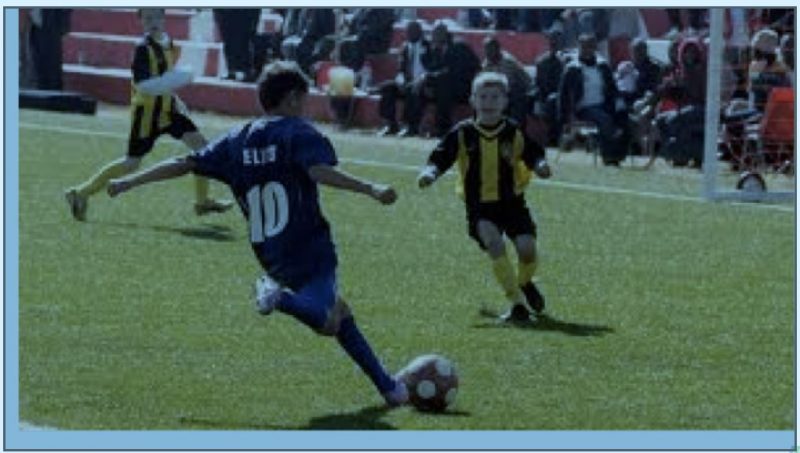What does a soccer photo have to do with critical thinking?
In her keynote address entitled Creating Thinking Classrooms at Dawson College Ped Days Jan. 14, Usha James shared a photo of a soccer player about to kick the ball near the net.
She asked the audience of about 140 teachers, professionals and support staff how likely it was that the player scored a goal or not.
There were many different perspectives on that one photo and compelling reasons to support the various opinions.
Usha then asked the audience if she should reveal the answer, yes or no. “There are many reasons not to give the answer,” she said. “In a classroom, you could keep coming back to the question and see how the thinking develops. We, as teachers, don’t have all the answers. We are in it together with our students and we will think it through together.”
She says that teachers need to move away from the model of the teacher being the sage who has all the answers if we wish to foster critical thinking.
So what’s the answer?
As for the actual photo, Usha said: “I have no idea what happened. It is a photo from the internet!”
Usha is the executive director of the Critical Thinking Consortium. Prior to that, she taught at the high school level for 12 years and served at the Ontario Institute for Studies in Education at the University of Toronto.
“Out of college, I could ask a great question and offer authentic problems to my students,” she said. The problem was she was not equipped for the “low-quality answers from students.” She added that teachers need to teach students how to think critically.
The Critical Thinking Consortium has transformed teaching by offering five intellectual tools that all people need to be great thinkers.
One teacher spoke up and said that students are good at collecting information but they lack the ability to make connections with the data. “It is like they can take a shopping list and buy groceries, but they cannot cook a good meal,” she said.
Teachers can build the capacity of their students to think by explicitly teaching five intellectual tools, she said.
Usha outlined five intellectual tools:
- Background knowledge (do students have accurate and relevant information required by a challenge?)
- Criteria for judgement (can students make reasoned judgements in the face of relevant criteria and use criteria to justify their decisions?)
- Thinking vocabulary (can students competently use key concepts related to thinking?)
- Thinking strategies (do students effectively employ useful strategies to work through the challenge?)
- Habits of mind (do students exhibit key characteristics of good thinkers?)
Four ways to promote a thinking classroom:
- Shape the climate to support thinking
- Create opportunities for thinking
- Build capacity to think
- Provide guidance to inform thinking
Aiming for higher engagement
Usha also discussed the level of engagement teachers should target. Many teachers aim to entertain their class and stay up late finding the perfect YouTube video to tie in with their topic. “The level we are aiming for needs to be intellectual engagement. When you aim for that, the students are also on task and interested, and they care. You will know they are intellectually engaged when you overhear them in the hallway talking about a challenge from class,” Usha said.
If teachers employ critical thinking pedagogy, they will target this higher level of student engagement. If critical thinking is important, it must be valued in assessments and it must be part of the class culture. “When they enter your class, students will be thinking how will I be challenged today?”
Critical thinking definition
Usha provided a definition of critical thinking: “Thinking through of a problematic situation about what to believe or how to act where the thinker makes a reasoned judgement that reflects competent use of intellectual tools for quality thinking.”
A critical thinking approach will ensure that the knowledge received during a particular class is deeply embedded by having to work through challenges.
Usha told Dawson College Communications that she was happy with the very engaged group at Dawson. At the end of her presentation, she encouraged teachers try to apply at least one technique in class next week.
Resources
Usha also pointed to resources to help continue fostering critical thinking. There are videos and articles on the Critical Thinking Consortium website and she recommended their “core book,” Critical Thinking Classrooms: https://tc2.ca/en/creative-collaborative-critical-thinking/resources/professional-books/creating-thinking-classrooms/
The Faculty Hub will be sharing more resources from Ped Days in the weeks to come: https://www.dawsoncollege.qc.ca/faculty-hub/



